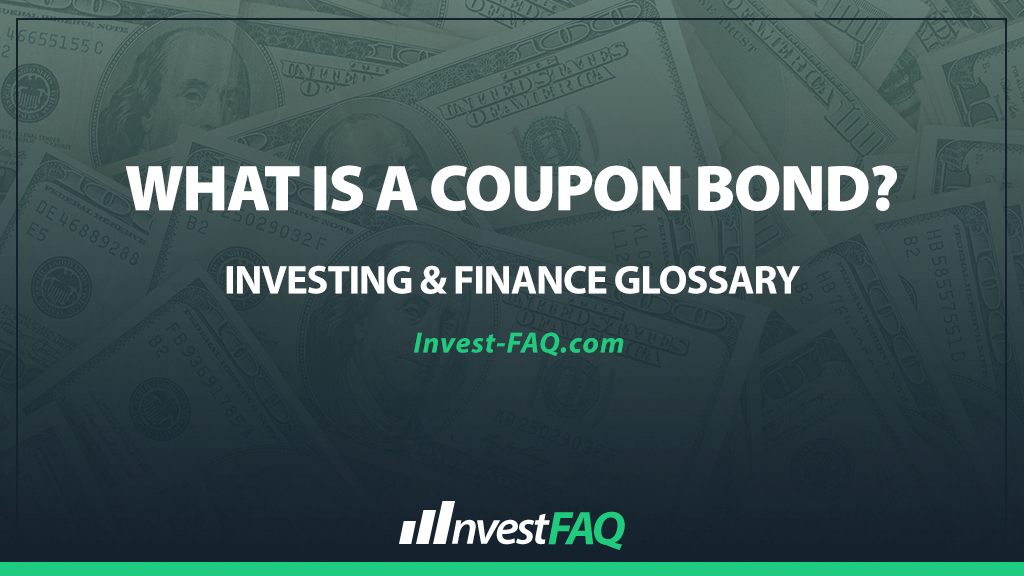
Coupon Bond
Contents
A coupon bond is a type of bond that pays the holder a fixed interest rate (coupon rate) over its lifetime, and the principal amount, or face value, is repaid at maturity. These bonds are issued by corporations, municipalities, and governments to finance various projects and operations.
Coupon bonds are a vital tool for raising capital in the business world. By issuing these bonds, entities can secure long-term financing at fixed interest rates, which can be more appealing than variable-rate loans for both the issuer and the investor.
For investors, coupon bonds offer a predictable income stream, making them an attractive investment option for those seeking regular earnings with a relatively low level of risk.
Example of a Coupon Bond
Imagine “Green Energy Corp.,” a company looking to raise funds for a new solar power plant, decides to issue coupon bonds with a face value of $1,000, a coupon rate of 5%, and a maturity of 10 years. An investor purchases a bond at face value. Each year, the investor receives $50 (5% of $1,000) as interest. At the end of the 10-year period, the investor is repaid the original $1,000.
In this scenario, the coupon bond allows Green Energy Corp. to raise the necessary capital to fund its project by promising to pay bondholders an annual interest rate of 5%. This interest payment is the “coupon,” historically referring to detachable coupons that bondholders would redeem for interest payments.
The bondholder benefits from regular interest payments over the bond’s life, providing a steady return on investment. At maturity, the repayment of the face value also returns the initial investment to the bondholder, completing the financial transaction.
Types and Uses in Business Scenarios
Coupon bonds are used across various business scenarios, including:
Capital Projects: Financing new projects or expansions that require significant upfront capital.
Refinancing Existing Debt: Issuing new bonds to pay off older, higher-rate bonds.
Operating Costs: Raising funds to cover large, anticipated expenses.
Investment Diversification: Offering investors a fixed-income option to diversify their portfolios.
Significance for Investing & Finance
From an accounting perspective, coupon bonds are significant for several reasons:
Liability Management: They represent a long-term liability on the issuer’s balance sheet, requiring careful management of future cash flows to meet interest and principal payments.
Interest Expense: The interest payments on coupon bonds are considered an expense, impacting the issuer’s net income and tax obligations.
Investment Income: For investors, the interest received from coupon bonds is considered income, affecting their taxable income and investment strategy considerations.
In summary, a coupon bond is a traditional financial instrument that benefits both issuers and investors through fixed interest payments and the eventual return of principal.
Its role in business financing and investment portfolios underscores the importance of coupon bonds in the broader financial landscape, offering a blend of security, predictability, and income potential.
FAQ
How does the coupon rate of a bond affect its market price?
The coupon rate of a bond directly influences its market price; if the coupon rate is higher than the current market interest rates, the bond’s price typically rises above its face value, and if it’s lower, the bond’s price may fall below its face value.
Can the interest payments from a coupon bond change over its lifetime?
No, the interest payments from a coupon bond remain fixed over its lifetime, providing a stable and predictable income stream to the bondholder, regardless of changes in market interest rates.
What happens to a coupon bond at maturity?
At maturity, the issuer of a coupon bond repays the bondholder the bond’s face value, concluding the bond contract and ceasing any further interest payments.
Are coupon bonds a risk-free investment?
While coupon bonds, especially those issued by stable governments, are considered low risk, they are not entirely risk-free; they are subject to interest rate risk, credit risk, and inflation risk, among others.
